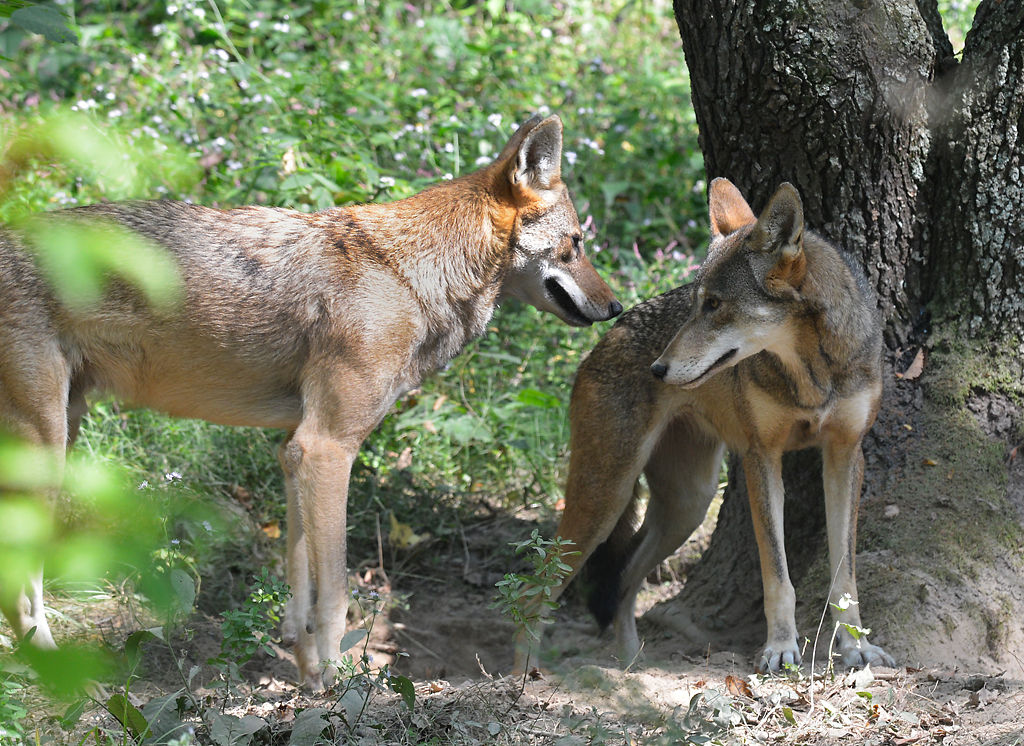The red wolf might be near extinction, but the nickname is strong at Arkansas State
EUREKA, Missouri — J.D. McKissic is a Red Wolf for life, the senior wide receiver says, even if that species of canid may be dying out.
The red wolf — the beloved mascot of Missouri football’s next opponent, Arkansas State University — is critically endangered. There are 50 left in the wild and another 250 or so living in captivity in zoos around the country, meaning there are more student athletes who call themselves “red wolves” than actual living red wolves.
The red wolf used to roam broad swaths of the American Southeast — as far north as Pennsylvania, south to the tip of Florida and west through the middle of Texas. One of their last strongholds, wolf experts say, were the Ozarks — northern Arkansas and southern Missouri.
Now, the wild wolves roam a single refuge in eastern North Carolina. There isn’t a single facility in Arkansas that actually hosts a living red wolf.
And according to McKissic, the Red Wolves’ star wideout, not many Arkansas State students know the plight of their dear mascot, Howl, and his canine brethren.
In fact, McKissic wasn’t aware, either, until a reporter clued him in Wednesday.
“It bothers me man,” he said after hearing about red wolves’ near extinction. “Red Wolf for life.”
The closest red wolves are at Eureka’s Endangered Wolf Center, which hosts four wolves — two females and two males paired off in the hopes they’ll breed, efforts that proved futile during the last denning season.
“The future of the red wolf is uncertain,” says Regina Mossotti, director of animal care and conservation at the Endangered Wolf Center. “It’s a horribly sad situation.”
WHAT HAPPENED TO THE WOLF?
You’ve heard this story before about vulnerable animals: hunted to near extinction, habitat destroyed by pollution and development. The red wolf’s history is no different.
The red wolf was a charter member of protected species on President Richard Nixon’s Endangered Species Act in 1973.
In 1980, they were declared biologically extinct in the wild, existing only in captivity. In 1987, the first pack was released in Alligator River National Wildlife Refuge in North Carolina. In 1990, another pack was released on St. Vincent Island off the coast of the Florida panhandle.
Since then, legislation has moved through Congress to defund the species’ survival plan or negate the red wolf’s protected status.
“In order to be successful to preserve a species, you need some sort of consensus,” said Jason Rylander, an attorney at the D.C.-based environmentalist group Defenders of Wildlife.
That’s something wolves, not just red wolves, don’t have. Partly because wolves don’t have the best reputation.
But not all wolves are big and bad like fairy tale villains.
Red wolves, which are smaller than their western cousin, the gray wolf, are more scared than they are vicious, more docile than excitable.
Mossotti took her children to see “Frozen,” she said, unaware a pack of wolves would start stalking the film’s protagonists. She had to explain to them afterward how unrealistic that depiction was.
At the end of the night, her kids went back to snuggling with their wolf stuffed animals.
“I’ve worked with wolves in the wild,” she said, “and when you approach their den where their puppies are or their food, like an elk carcass they just worked hours to get down, you’d think they would defend it and growl and snarl and all that stuff.
“They don’t. They run away.”

